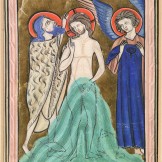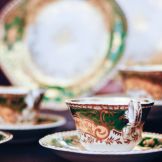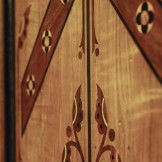Blackburn Museum has a fascinating collection of Decorative Arts including icons, ceramics, textiles and furniture.
Icons
Icons are religious works of art, most commonly a painting on board. They form part of Orthodox Christian worship and are used at home for private prayer. Blackburn Museum holds the largest collection of religious icons outside London. The icons here date from the 1300s to the late 1800s and were made in Russia, Greece and Eastern Cypress.
Icons are believed to have protective and healing qualities. Inner meanings are conveyed by symbolism and colours used. Icons show three types of representations – the image of the mother and son, images of Christ and of the Saints. At Blackburn museum there are examples of each kind.
For more information on icons see V&A website
Ceramics
Blackburn Museum holds pottery including tea wares and East Asian ceramics. Famous potteries such as Royal Lancastrian and Spode are represented in the collection. On display are ceramics associated with tea drinking and the growth in its popularity since the 1700s. There are a number of local commemorative ceramics marking key national and local events including the Blackburn wage dispute in 1878.
The museum holds examples of contemporary studio ceramics including pieces from by internationally famous local artist Halima Cassell. Cassell responds to Islamic architecture and African pattern in her approach to ornamentation.
Textiles
With a rich history in the production of cotton, Blackburn Museum holds examples of flat textiles and costume such as souvenir handkerchiefs from the First World War and examples of women’s dress spanning the 1800s to the 1960s.
On permanent display are some uniforms including a Lancashire Constabulary ‘Peelers’ uniform from 1844.
Furniture
In the collection at Blackburn Museum there are examples of long-case, or grandfather clocks, from each of the main local makers including Henry Watson of Blackburn.
At Turton Tower there is a collection of regional oak furniture dating from the 1600s.



